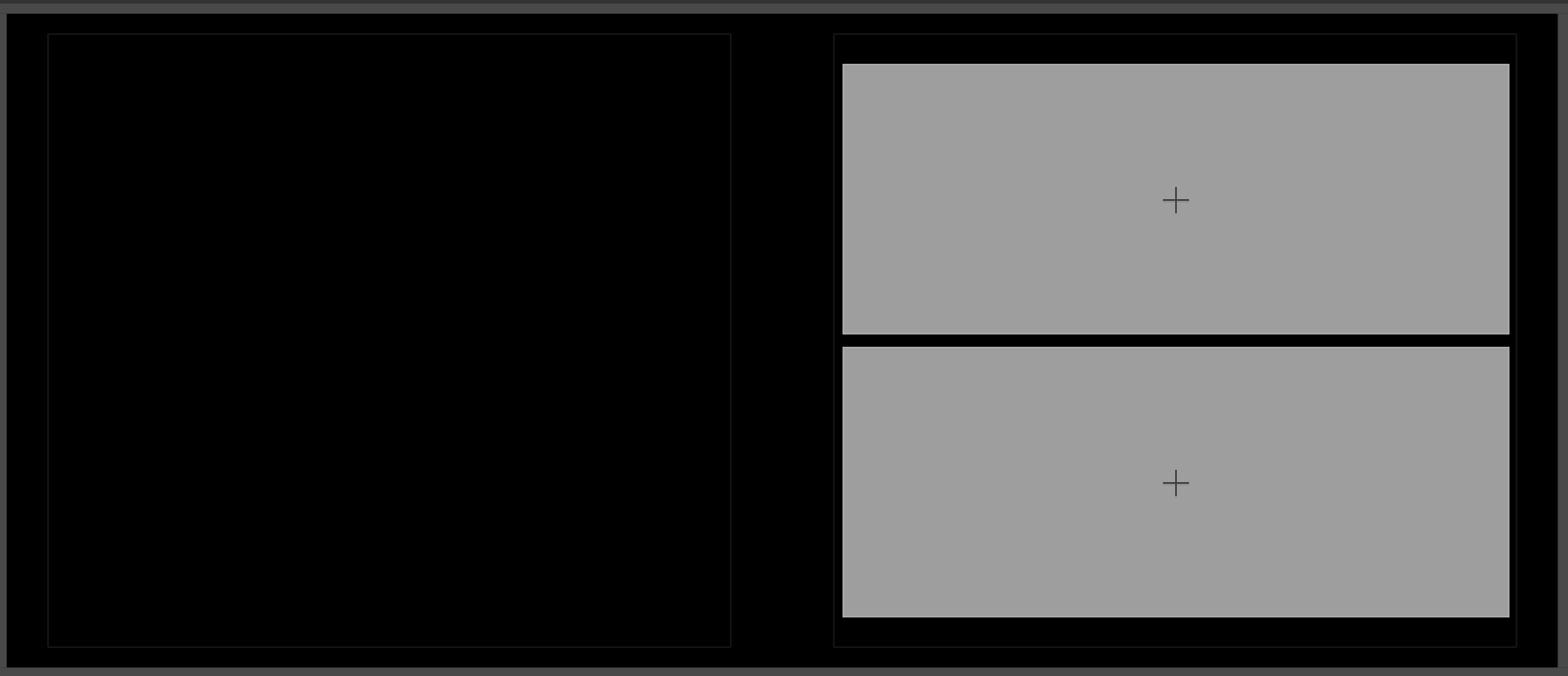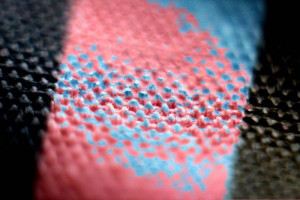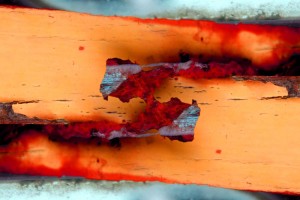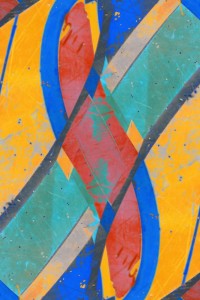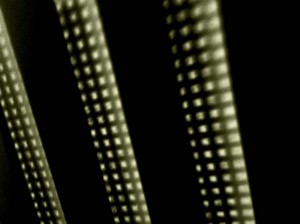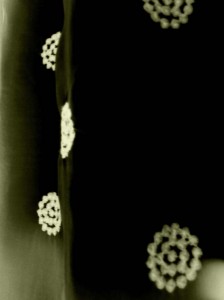All posts by 2566 - Viviana Maia
Filters
Personal Study – Abstraction – Evaluation:
Synthetic Distortion – Photo Book Layout:
Personal Study – Abstraction – Evaluation:
Personal Study – Abstraction – Photoshoot:
Personal Study – Abstraction – Photoshoot:
Personal Study – Abstraction – Photoshoot:
Personal Study – Abstraction – Bibliography:
rexer l the edge of vision 2009 new yorrk by aperture foundation
lenman r the oxford companion to the photograph 2005 oxford new york
https://en.wikipedia.org/wiki/Abstract_photography – Mike Weaver (1986). Alvin Langdon Coburn, Symbolist Photographer. NY: Aperture. p. 20.
http://barbarakasten.net/second-nature-abstract-photography-then-and-now/
http://www.theartstory.org/movement-color-field-painting.htm
http://www.newrafael.com/websites
http://www.moma.org/collection/artists/1164?=undefined&page=1
http://www.neromagazine.it/n/?p=7957
http://www.britannica.com/topic/vortograph
http://lumieregallery.net/wp/202/aaron-siskind/
http://www.mocp.org/detail.php?type=related&kv=6783&t=people
http://arthistory.about.com/od/modernarthistory/a/color_field_10one.htm
http://www.visual-arts-cork.com/history-of-art/colour-field-painting.htm
http://arthistory.about.com/od/modernarthistory/a/cubism_10one.htm
http://www.metmuseum.org/toah/hd/cube/hd_cube.htm
http://www.theartstory.org/movement-cubism.htm
http://www.tate.org.uk/learn/online-resources/glossary/c/cubism
http://www.britannica.com/biography/Alvin-Langdon-Coburn
http://www.brainyquote.com/quotes/keywords/abstract.html
http://mastersofphotography.blogspot.com/2011/04/alvin-langdon-coburn.html
http://www.brainyquote.com/quotes/quotes/a/aaronsiski141150.html
http://www.andrearosengallery.com/exhibitions/2003_10_aaron-siskind-an-abstract-expressionist-eye
https://www.lensculture.com/siegfried-hansen
http://aesthetic.wikia.com/wiki/Vaporwave
http://knowyourmeme.com/memes/subcultures/vaporwave
https://www.youtube.com/watch?v=PdpP0mXOlWM
http://anothercountyheard.blogspot.com/2013/03/the-verdict-on-vaporwave.html
Personal Study – Abstraction – Essay:
The development and recognition of abstraction and abstract photography since its discovery with the used of analog techniques to now, where there is a more digital approach begin taken through the use of technology.
“Abstraction forces you to reach the highest level of the basics.” – Alan Soffer
Abstraction comes from latin meaning away from and draw. It is the process of taking away or removing certain characteristics from something, whether that is a landscape, a person, an item etc in order to reduce it to only some of its intentional characteristics. It is sometimes called or known as non-objective, experimental, concrete or conceptual photography. It all essentially means creating a visual / photograph that doesn’t have an immediate association with the original object or even something that doesn’t particularly represent the world we live in. An abstract photograph or piece of art is all about banishing everything it is showing, or wanting to show and detach only a fragment of a scene. All this is doing is removing its inherent context from the viewer, so that they only get exactly what the photographer or artist wants them to see. This is purposefully done to be about to create a seemingly unreal appearance from real objects, people or places. Not only that, but some of the most popular and well known piece of abstract photography and art are all fundamentally focusing on things that very often go unnoticed by the human eye on a day to day basis, however are always present. These are things like shadows, colour, lights, textures, shapes etc. Personally, I believe that anything that simply be turned into an abstract visual, it all depends on the way you look at objects, situations, people, places etc.
Abstraction has been around since around the first decade after the invention of the craft. One of the earliest traces of abstract photography was done in 1842, when John William Draper created some photographs using a spectroscope, which he dispersed light rays into and recorded the unusual patterns that it would create. His prints, were viewed as having no visible relation to reality and the real world, compared to what other photographers in that time were recording, having a much more close link with the real world. The interesting thing about this was that Draper actually saw these photographs as scientific records rather than art, however their abstract quality is very much appreciated today for its groundbreaking status and individuality .
I have always had a fascination for something that is out of the normal and of the thought of turning something that can be portrayed as unoriginal and boring into something that can make people think of the purpose or even ask the simple question that may confuse many and that being ‘What is it?’. That’s possibly the main thing that really pulled me into exploring the intricate but captivating theme of abstraction for my personal study. Abstraction is still to this day something that many people still do not understand and due to this, I feel like abstraction is not as well appreciated when differentiated with something less complex which enables a better and more simplistic understand of which is not the can with this theme. People are pre disposed into thinking that there is a reason for everything, whether complex or not. However, I feel like abstraction is for the most part, a result of experimentation, and nothing more than trial and errors. Sometimes, the best outcomes from the events you have least faith in, which I found to be very true when creating the visuals for this project.
‘There are always two sides to every story’
Throughout my research I was astounded at the many faces abstraction has. This got me thinking about the way that many artists and photographers use abstraction as if they were almost taking a self – portrait of their brain and their own unique way of thinking about the complex world we inhabit. With that in mind, it is fascinating to therefore see how the different visuals that abstraction can have, have changed over the decades from when abstraction was first discovered.
There are two main differentiations that divide the term and the visuals of abstraction, these two main differentiations being the concept of abstraction being created using an analogue process , which was the process that began not only abstract photography but also the main concept of photography it self during its early times, or by using a digital process, which is what we seem to cannot live without nowadays more than ever. nalog photography is essentially the use of a film camera to take photographs, which is something I have explored for this project. However, when I refer to analog photography, I am not only referring at the image making process but I also referring to un-edited / un-manipulated photographs, meaning that they have not been changed in any way, much like a photograph taken with a film camera will be. Analog abstract photography was the first type of abstract photography to come about, as back when abstract photography was beginning to emerge and gain recognition, digitally formatted photographs were not yet around. Some photographers and art historians have been speaking and / or writing about abstraction for a long time, however none of them ever attempted to create a specific visual for the term and they also were not too sure on an exact meaning for it either. However it all started to change when Alvin Langdon Coburn suggested in 1916 that he was decided on creating an exhibition with the title of ‘Abstract Photography’. He made it clear that “no work will be admitted in which the interest of the subject matter is greater than the appreciation of the extraordinary”. Although the actual exhibition didn’t end up going ahead, Langdon Coburn did indeed create some abstract photographs later on in his life. Therefore that was really there first time someone was really showing any interest in trying to define what abstraction in photography really was and what it meant and represented, not only in theory but also visually.
Some of the first photographs to be classified as abstract along side John William Draper’s photographs which were actually just taken to aid his science research, however years later it was discovered and thought to be one of the first recordings of any type of abstract photography, there was also Henry Fox Talbot’s “Sun Pictures”. These photographs, were actually photograms, and they consisted of shadow images that were recorded straight onto paper without the use of any negatives. These “sun pictures” weren’t anything like anyone had seen before and nothing that really had been done before as well, however thought to be a definition of abstractions by theory. They portrayed no “surface details” as a ‘normal’ photograph would be expected to include, and they are essentially just some shadows and their outlines, and the interesting thing was that they were “light registering in two – dimensional patterns”. Digital abstraction is mainly the creating or manipulating of photographs using a digital process. Digital abstraction was very popular in the 1990’s as this is when computer started to become affordable for most people to have, therefore they started manipulating with their photographs and due to the graphics still not being very high in quality the photographs, this was called the digital revolution. Even though they may have just been of sceneries and situations that we are very familiar with and are things that are very popular to photograph, they would always come out looking ‘glitched’ and more abstract look. “Even though the foundations of many digital technologies had been laid up to sixty years earlier, these technologies became seemingly ubiquitous during the last decade of the twentieth century: hardware and software became more redefined and affordable, and the advent of the World Wide Web in the mid – 1990s added a layer of ‘global connectivity’”. It’s very clear to see, when looking at how digital art in itself and not just in the terms of abstraction has moved along over the years, that many artist were already experimenting with all sorts of technology to try and get ahead of the digital world. Something which we can see that was created 20 – 30 years before the big ‘computer fever’ in the 1990s, some films in the 1960-70s were already being creative with the technology that they could get their hands on, for example, there are some videos and propaganda’s where they used technology and abstraction which is now considered as ‘trippy’. It was a mixture of pop art and digitalised cartoons, which would then be used to create new and unique visuals, that many had never seen before. Therefore meaning that technology was something that some artists were already using and experimenting with to create out of the ordinary pieces and visuals.
Through both the digital medium and the internet, there are endless possibilities for what can happen, specially nowadays with everyone trying to be more creative than the next person and wanting to stand out in a digital world where we see photographs and videos more than ever before. The website rhizome.org is a great medium to find exceptionally unique digital abstraction, however new internet terms such as Vapour Wave, Synth Wave, Cloud Rap, Witch House, and other Tumblr aesthetic terms have also been emerging, and it combines different nostalgic and digital visuals to create a whole new look, and aesthetic for that matter. Something that i have noticed even before i began researching for this personal study, is that although the internet is something that is new, and has had a fast growing popularity throughout out the years, is that we are in a way, were are going back to how the internet used to be and how things used to be before or just at the beginning of the internet ,and how the look of computers used to be like. As mentioned just above, these Tumblr emerging aesthetics are very nostalgic, and it is something that I am finding very interesting, the fact that the more advanced and the higher quality of digital imaging that we have, the more we are making our aesthetics look as if we were going back in time. Therefore, when looking at digital abstraction, I very often would find Windows 98 edits and abstract images combining these different digital aspects, all created digital as well.
“Colour field painting is a tendency within Abstract Expressionism “(a post – world war II art movement in American painting, developed in New York in the 1940s) . It has been around since the 1940 -50s in New York. Many people were initially surprised by some of the early works of Mark Rothko, Barnett Newman and Clyfford Still. These three artists who engaged in the Colour Field Painting movement are some names among others who are part of the first generation of American Expressionists.; these bing people who were given the first opportunities to open doors and explore what Colour Field Painting really was.However, in the late 1950s, what is now known as the second generation of American Expressionists emerged. This second generation included artists such as Helen Frankenthaler, Morris Louis, Kenneth Noland and Jules Olitsk who began to evolve more of a neutral and unbiased and more formal visual of Colour Field Painting, extracting all the feeling and emotional vibes from their paintings, which is elements that the first generation of American Expressionists included. Because of this idea, and approach to the movement, it was given a new sub-category called Post Painterly Abstraction by Clement Greenberg.
Colour Field Painting is the meaning of when artist were trying to have some freedom from the normal forward thinking of what art should be. As many wanted to go against what most people wanted to define art as and what the standard look of art was, it meant that many were left on either side of the fence, many found anger in this movement as they were too into the perceived standard of art and many other people’s visions opened up for miles allowing for new creative ideas and experimentations.
Colour Field Painting has its own distinctive ways of creating new and exciting pieces of art or in other words, a sort of guide line and thinking frame for people to be able to create their own colour field painting. First of all, artists who are into and support this movement will see the surface in which they desire to paint as an open field for their vision to just ‘spill’. Not in any way shape or form is there a ‘main focal point’, which seems odd if compared to traditional painters who organise their surface neatly depending on what they are wanting to right. Another aspects is that often, they are not too invested in creating a realistic visual, and going with that thought, these types of artist will very often, if not pretty much every time, will not create an object that we as humans can recognise and visualise in our day to day life styles. And finally, and what i think is the most important aspect about Colour Field Painting is that it allows for the artist to express their emotions and their individual state of mind in new and open ways, rather than felling restricted.
Something interesting and very much the opposite to standard art, is that Colour Field Painting is less focused on the process of creating the work and how it all is done, but it is more focused on the relationships and contrasts of overlapping areas of colours and how they are all working together to create a more open field of vision, without a structure but very much geometric look to it all. Some of the characteristics of Colour Field Painting which people notice straight away is that the visuals are bright, with specific geometric shapes which are now neatly defined and how that works in with the background. The actual paintings are usually really big, which is in a way done on purpose to be able to aid the viewer with a whole new experience in emerging themselves in all the colour; a field of colour.
The Colour Field Painting movement is very much related and apart of abstraction, and it has not only encouraged for more diverse abstraction to arise, whether in analog or digital art, and photography. Photographers such as Penelope Umbrico (End of Things) and Adam Broomberg and Oliver Chagrin (The Repatriation), although digital have a very distinct ‘Colour Field Painting visual to their work, which just expresses that this movement has been inspiring and creating for more than 60 years sine its rebel beginning.
Cubism is a conceptual approach that looks at realism and “aims to depict the world as it is and not as it seems”, and it tries to visualise a concept for the Fourth Dimension. Paul Cézanne expressed cubism as being made up of mainly 3 ‘ingredients’ and these being geometricity, simultaneity and passage. “Cubism can be considered realism, in a conceptual way, rather than perceptional way”. This type of art is considered on the most prestigious art visuals of the early 20th century. It first came about and created by Pablo Picasso and George Braque in Paris between 1907-14.
“The Cubist painters rejected the inherited concept that art should copy nature, or that they should adopt the traditional techniques of perspective, modelling, and foreshortening. They wanted instead to emphasise the two – dimensionality of the canvas. Soothes reduced and fractured objects into geometric forms, and then realigned the within a shallow, relief like space. They also use multiple or contrasting vantage points.”
Cubism, as a movement has already had four periods since its beginning; Early Cubism (1908-1910) – Analytic Cubism (1910-1912) – Synthetic Cubism (1912-1914) – Late cubism (1915-present day).
Early cubism (1908-1910): This period was the beginning of the movement and style visuals, which were firstly created by Pablo Picasso and Georges Braque.
Analytic Cubism (1910-1912): “Its artworks look more severe and are made up of an interweaving of planes and lines in muted tones of blacks, greys and ochres”
Synthetic Cubism (1912-1914): “is the later phase of cubism, generally considered to date from about 1912 to 1914, and characterised by simpler shapes and brighter colours. Synthetic cubist works also often include collaged real elements such as newspapers. The inclusion of real objects directly in art was the start of one of the most important ideas in modern art.”
Late Cubism (1915-present day): is the last period of the Cubism movement for now, which is basically the period of finding value in the works previously done.
Cubism is a visual that is recognised all over the world due to its very distinctive and unique characteristics; Geometricity is a characteristic that is very prominent and the main thing that people see and think about when looking at a cubism piece. it is a simplification of objects and subjects that have been adapted into geometrical elements and compositions that may or may not add up to the whole figure or object known in the natural world. Other more subtle but still predominant characteristics are elects such as approximation of the Fourth Dimension, conceptual instead of perceptual reality, distortion and deformation of known figures and forms in the natural world, passage which is the overlapping and interpenetration of plane and simultaneity or multiple views meaning different points of view made visible on one plane.
Vapour wave is a genre of music that originated from online websites such as tumblr and reddit in the early 2010s. It is distinctively has no set location to where it could have originated from, as it started online and cannot be traced back to its roots. Therefore because of this, it makes this genre of music and aesthetics completely globalised. In the beginning, it began as an aesthetic that was popularised by an obsession with 80s and 90s culture using glitch art, early digital graphic designs, roman busts, a fascination with tropical landscapes and Japanese culture. The look of the aesthetic is seen as a series of abstract images, photos and art that are known for feeling ‘oddly perfect’, either by having a running theme, following certain patterns or by having colour pallets that blend well together. The aesthetic first emerged through two album covers (A1 – Chuck Person) merged together to create what we now call vaporwave. It has been described by some as a digital punk movement with ideals that counter for our most natural concepts ownership by making vapourware an anonymous art for anonymous people. The word vaporwave is essentially the combination of vapourware, which is a business term to describe a product which id announced to the public but never actually release. It is also marked as the term to describe perpetuating repetition of ideas which are not concrete or meaningful in their philosophy, described as waves of vapour. It can also be seen as a critic on modern capitalism. Some people go by an internet emerged abbreviation “2deep4u” which is meant to be “too deep for you”. This abbreviation / phrase is indicating that the content may be too profound or obscure for its audience to appreciate, due to the abstract nature of it.
“Vaporwave iconography centers around a set of graphic tropes depicting obsolete technologies; VHS, CD audio and HD video, early computer graphics, and anachronistic corporate entities like AOL and Internet Explorer. The emblems of outdated technology are a reminder of the impact of technological change on daily life, and the icons of capitalism are re-purposed to subversive effect. There was a willingness to experiment, to use images that defy existing standards of what is attractive…” – Anothercountryheard blogTo be able to have some inspiration for me to be able to create, respond and develop a style of abstract visuals, I had to look very closely at the different artists whether from one hundred years ago or from last year, as well as investigate the different processes and ways of creating some unique and astonishing abstract images. To begin with I was very much influenced by Alvin Langdon Coburn – “Vortograph of Ezra Pound – 1917” , Paul Strand – “Porch Shadows – 1916” , Franntisek Drtikol – “Circles – 1928”, Raplh Eugene Meatyard – “Untitled (Tricycle in snowy yard) – 1955”, therefore I wanted to find a way of creating visuals that would respond well and that could speak out a connection between my work and some of the work from the different artists. To achieve this, I used a photo filter using the Photo Booth app using my iPad called X-Ray to achieve my visuals. I found it very interesting however, due to the fact that I wasn’t going to manipulate my photographs in any after they were taken which would make them analogue. however I was taking them using a piece of advanced technology that was definitely not around when the photographers mentioned above produced theirs. It feels if I was breaking the boundaries and going against what my whole project was about by combining digital and analogue processes to create one set of visuals.
Another thing that I did which was also influenced by not only the photographers mentioned above but also any other photographer mentioned previously in my research that didn’t use any type of digital process to create their abstract visuals, was to create my own set of abstract images using an old film camera with 20 year old, out of date film. I did this so I would be able to understand the mind patterns that these old abstract photographers had to think about when wanting to produce an abstract photograph, and the fact that you have to really think about everything such as lighting, and angles as there’s no going back once the photograph is taken. Again, I did not use any post – production editing to manipulate these photographs in any way, as I wanted to make sure that they were as raw and they would be if I was to be taking those photographs one hundred years ago.
Lastly, I wanted to explore the digital side of abstraction. I had looked at different processes that made it obvious that there was some really intense post – production done to a photograph. I did a lot of researching about the internet emerging aesthetic known as vaporwave, however I wanted to create something where I could actually use the environment around me to create abstract photographs, even if I did manipulate them to make them look a lot more abstract, whereas vaporwave wouldn’t really give me room to use my own visuals. Therefore, I decided to make my own unique style using inspiration from Peter Halley and Rafaël Rozendaal. These artists create very unique pieces that inspired me to manipulate my photographs a certain way using Photoshop, as I decided to take some photographs before I got any sort of inspiration of what I wanted them to look like, as I wanted to be able to reflect my own style and to not just have a copy of the artists’s work.
Overall, there has been a 360 turn around with the visuals of abstraction due to the very strong influence of the media, internet and where all of that can be used which is through the use of technology. However, there is still analogue abstraction being created and people are still tracing back to the first abstract discoveries which is something that is still fascinating. From my point of view, I personally think that abstraction is something that cannot be predicted in any way, shape or form, therefore we can only wait to see how obscure and complex visuals will look like in the future, what’s going to be the influence and hopefully the appreciation for abstraction whether digital or analogue will still be appreciated who knows if they will combine.
“The goal of abstract art is to communicate the intangible, that which eludes the photograph and normal seeing.” – Curtis Verdun
“Abstraction generally involves implication, suggestion and mystery, rather than obvious description.” – Robert Genn







